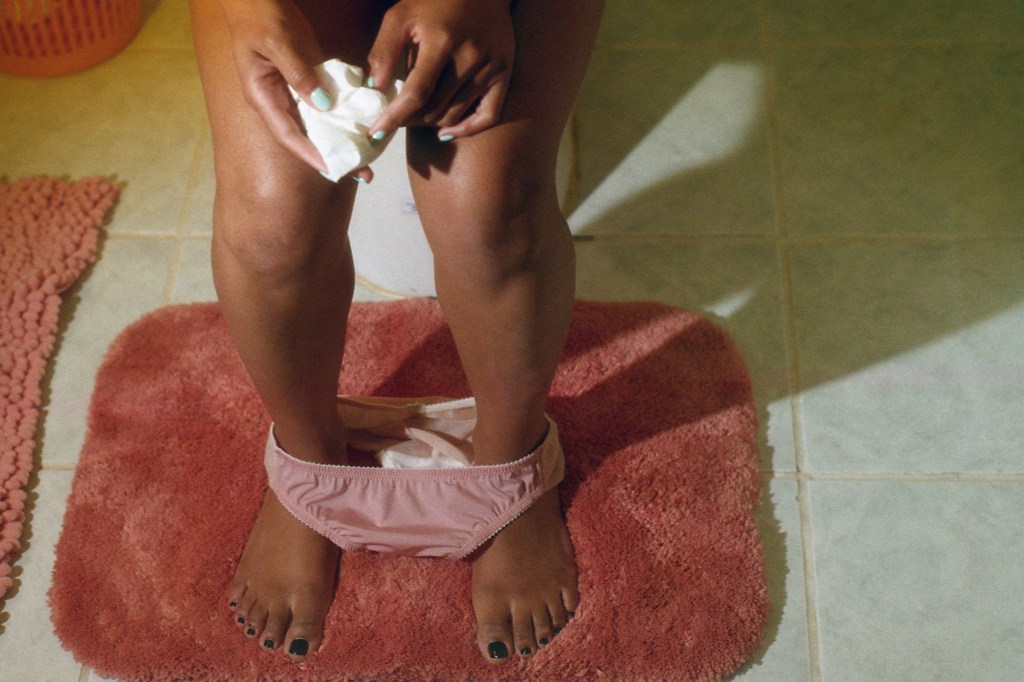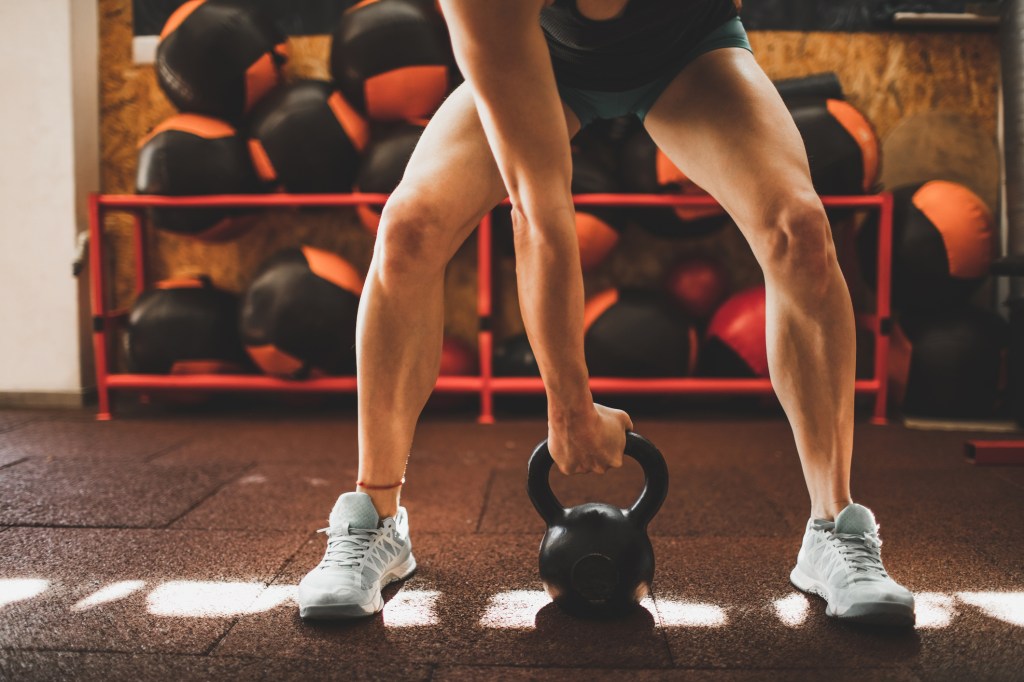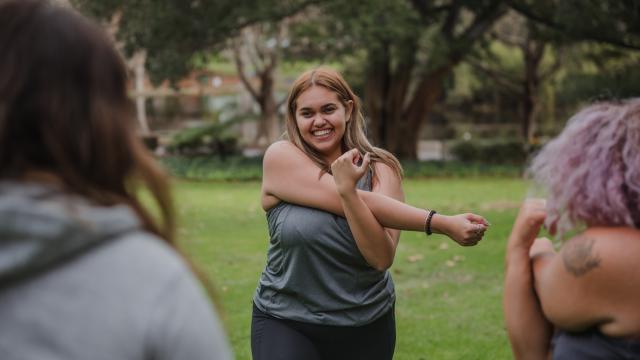If you’re someone who gets their period, it can be a struggle trying to maintain the same level of motivation to work out throughout the entire month. Some days you might feel like you have an abundance of energy to power through a HIIT session, while other days, you might not be able to bring yourself to take a leisurely stroll around the block. To add to this, you then have the dreaded mood swings, stomach cramps, bloating and headaches that disrupt your exercise flow.
But what if there was a savvy way you could tap into your hormones and tweak your approach to exercise to avoid these curveballs altogether?
Enter: ‘cycle syncing’.
We’ve spoken to a handful of experts to reveal everything there is to know about cycle syncing your workouts for better periods, optimal fitness results, more energy, increased productivity and overall improved wellbeing.
What is cycle syncing?
Cycle syncing has become a popular wellness trend, which involves timing and modifying lifestyle factors to match the current phase of your menstrual cycle. The idea is that by changing these elements and honouring your natural cycle, you’re able to meet the hormonal needs of your body and make your period easier to manage.
The term ‘The Cycle Syncing Method’ was first coined and trademarked by functional nutritionist Alisa Vitti in her 2013 bestselling book WomanCode. Vitti, who is the founder of FLOLiving Hormone Center and creator of the MyFlo app, detailed how to use this method to eat, exercise and work to optimise your hormones throughout the four phases of the cycle.
Unlike testosterone-driven people who operate on a relatively stable 24-hour hormone cycle, oestrogen-driven people roughly operate on a 28-day cycle. This explains why women experience a rollercoaster of physical changes in a month, according to gynaecologist, fertility expert and co-founder of sexual wellness brand Lovers, Dr Raelia Lew.
“During the different stages of our cycle, our hormones affect our physical energy levels, mood and motivation,” Dr Lew said. “Cycle syncing can be especially relevant for people who are ovulating and experiencing the infradian rhythm of a natural menstrual cycle.”
TBH, the scientific research behind the practice is a little outdated and preliminary. It can also be easy to dismiss it as just another woo-woo wellness trend, especially with some schools of cycle syncing (yes, these exist) using alternative language like “inner spring” and “goddess season”. However, the science on which it’s based is solid — for example, a study published in the journal Archives of Gynecology and Obstetrics showed how hormone fluctuations over the monthly menstrual cycle affected individuals’ emotional status, appetite, cognitive function, thought processes, metabolism, body temperature, sleep quality, skin quality and much more.
It’s also not hard to find supportive health professionals and advocates of the practice to warrant trying it out. And if it’s going to improve your life in even the slightest way, it’s definitely worth looking into. Plus, the power that simply comes with cycle knowledge and understanding your monthly hormonal shifts alone is profound.
There are various ways you can adapt to your cycle, like focusing on diet, sleep patterns, social life (and so forth), to eliminate those hormonal curveballs. But when it comes to exercise, specifically, cycle syncing can make you feel more in tune with your body and may even help you achieve fitness goals in a shorter amount of time. So, if you’re interested in trying the process, here’s exactly how to do it.
The four menstrual cycle phases

The first step to cycle syncing is understanding the phases of the menstrual cycle and what each one entails.
Across the span of a monthly cycle, you’ll move through four distinct menstrual phases. The average cycle lasts 28 days but can vary from 21 to 35 days.
Menstrual phase (part of the follicular phase): This marks the beginning of your cycle (the first day of bleeding). It usually lasts between three to seven days, and during this time, your oestrogen and progesterone are low.
Follicular phase: For those with a regular cycle, this phase lasts up to 10 days and commences as your period starts to taper. Oestrogen and progesterone are on the rise.
Ovulatory phase: Assuming a 28-day cycle, the ovulatory phase occurs between days 13 to 17 and roughly lasts 24-36 hours. An egg is released, oestrogen peaks, and progesterone keeps climbing. You may also notice vaginal discharge becoming more clear and mucoid.
Luteal phase: Between days 18 to 28, progesterone surges and oestrogen remains high. If the egg isn’t fertilised, hormone levels decrease and the menstrual cycle begins again.
Who should try cycle-syncing their workouts?
Everyone with a period can benefit from cycle-syncing workouts in some way or another, but there are certain groups who may experience the most significant improvements to their overall wellbeing. These groups include those who:
- Are overweight or struggle with obesity
- Are overly fatigued
- Have a missing or decreased libido
- Want to conceive
- Have polycystic ovarian syndrome (PCOS)
Even if you don’t fall into one of these categories, Sydney-based personal trainer and nutrition coach Rochelle De Luca says you may benefit from cycle-syncing workouts if you experience any of the following symptoms:
- The inability to complete a regular training routine to the same volume or intensity
- Decreased performance
- Loss of motivation
- Not feeling recovered (due to hormonal restless sleep)
- Injury (especially after ovulation)
- Headaches
- Irritability
- Mood swings
- Cramping
- Appetite cravings
Keep in mind that everyone experiences their period differently, so the principles of cycle syncing largely rely on how your individual hormones work.
What are the benefits of cycle-syncing workouts?
Scene: You’re killing it in the gym, reaching personal bests and feeling incredibly motivated. But then, boom! — your first day of your cycle kicks in, and all that motivation is instantly zapped out of your system. All you want to do now is eat your body weight in chocolate while binge-watching Netflix.
This plummet in energy may be demotivating, but De Luca said this is where cycle syncing really shines through by helping you overcome this temporary slump.
“Don’t despair, because the very same hormones can be worked to your advantage,” she said.
Training in sync with your menstrual cycle comes with plenty of benefits, some of which include:
- Finding it easier to stick with a training plan
- Feeling more energised
- Experiencing fewer mood swings and cramps
- Decreased recovery time
- Improved performance
- Improved sleep patterns
- Better sense of wellbeing
This isn’t an exhaustive list, but it can give you an idea of what to expect from the practice.
The best exercises to do during each phase of your menstrual cycle

Below is a general guideline of possible exercise intensities that may be beneficial during each stage of your menstrual cycle, as well as nutrition tips to support your workouts. Keep in mind that it’s always crucial to listen to your body and do what feels best. That means if you feel like pushing yourself that extra bit harder or need to take things at a slower pace, then, by all means, go for it. You do you.
Menstrual phase
Focus on: low impact workouts, progressing to light cardio
Your energy is at its lowest at the start of your period so for the first few days, aim for gentle movements like stretching (try using a foam roller), restorative yoga and meditative walks outdoors.
A few days later, you’ll start to feel your energy return, and this is a great phase to gain maximum benefit from high-intensity workouts, according to De Luca.
“Book in a cycle class or incorporate bursts of sprints into your usual running routine,” she explained. “If you’re particularly prone to mood swings, a boxing class or a session that involves the rower or ski, is a great way to let out stress.”
As for your diet, now is the time to focus on iron-rich foods, according to women’s health clinical nutritionist and dietitian Wendy Fedele.
“This will help make up for the losses we experience during this phase so eat plenty of lean meat, fish, chicken, beans and legumes, tofu, dark leafy greens, whole grains and nuts and seeds.”
“Omega-3 fatty acids that we find in oily fish like salmon, sardines, mackerel, herring and trout, may also help to reduce symptoms like cramping and bowel changes that we often experience during menstruation.”
Follicular phase
Focus on: Cardio and HIIT
“The follicular phase is our energy powerhouse, leading to an oestrogen peak around ovulation,” Dr Lew explained. “For this reason, increased intensity exercise may be more enjoyable and you may be able to push yourself harder in this phase.”
De Luca recommends making full-bodyweight workouts the focus. “Ramp up the protein intake and hit your main body parts with squat, hinge, lunge, push, pull and carry movements.” Think: plenty of deadlifts, bench presses and rows.
Look to move your body in energising ways – try new exercise classes and develop new skills.
“You’ll want to aid your workouts with a balanced diet of protein, carbs and healthy fats,” De Luca said.
Additional foods to include during the follicular phase include leafy greens, citrus, legumes, flax and pumpkin seeds, avocado and a wide variety of fermented foods.
Ovulatory phase
Focus on: HIIT, weights and circuit training
This phase tends to be when your confidence is high, so embrace your powerful feminine energy.
“When you enter the gym, your mantra is ‘I am Sasha Fierce’”, De Luca said.
Because your body is better at using fat for energy during this period, you want to ensure you’re using your fat-burning energy system rather than your glycogen-fuelled systems. So, focus on incorporating endurance, resistance and cardiovascular exercises instead of fast-paced cardio sessions. For example, if you love running, switch to long, easy jogs or hilly hikes. Or, if you’re into strength training, “push yourself with your heaviest weights while you’re working out, rather than aiming for plenty of reps in lighter workouts.”
De Luca also notes pre and post-stretching is particularly important during this time.
“Put that extra effort into pre-workout warm ups such as foam rolling, stretching and banded activation, as muscles are more vulnerable to injury during this phase. And don’t forget to cool down.”
Help your body maintain balanced oestrogen levels during the phase by incorporating cruciferous vegetables, bell peppers, berries, tomatoes, maca and leafy greens into your diet.
Luteal phase
Focus on: Pilates, yoga and resistance training
At the beginning of this phase, your energy will remain high so take advantage of this while it lasts by keeping up with the power workouts.
You’ll quickly feel a depletion in energy levels (usually during the last five days), and that dreaded sluggishness and loss of motivation will kick in. However, De Luca says to “power through this phase, and your body will reward you”.
That doesn’t mean dragging your body to a gruelling boxing sweat sesh. Simply shift your focus to more calming, lower-resistance workouts like yoga, Pilates, walking or any other activity you find physically and mentally calming.
“Water retention and other premenstrual symptoms can make high intensity workouts feel much more taxing, so while in the gym, stick with 60 to 70 per cent of your max effort, walk it out, mobilise, stretch or hit the beach for a soothing swim.”
During this phase of your period, the food cravings will kick in, but as tempting as it may be, “try to limit foods high in sugar, salt, saturated fat and refined carbohydrates,” Fedele suggested.
“Instead, include protein rich foods with meals and high fibre, good quality carbs to help manage appetite and cravings. It’s also a good time to make sure you’re getting enough Calcium, which has been shown to help reduce PMS symptoms.”
How to track your menstrual cycle
Before you make any lifestyle changes, you’ll need to track your cycle and learn your personal pattern.
“The length of a natural menstrual cycle is traditionally calculated from day one of a period to day one of the next,” Dr Lew explained.
If your period is irregular, you can also track other symptoms like energy and mood changes or cervical fluid around ovulation to determine where you are in your cycle.
To keep track, mark these days on your calendar and keep a journal of your symptoms. Or, you can also turn to some handy apps available online like Flo, Clue, My Calendar, Eve by Glow and Ovia Fertility (the latter is specifically ideal for those wanting to fall pregnant).
Remember, everyone’s body (and period) is different, and it can take up to three months before you can identify approximately how long each of your phases lasts. Once you start the practice of cycle syncing, take note of how your body is responding to any new lifestyle changes throughout the process and adjust accordingly.
How to track your menstrual cycle if you’re on hormonal birth control
Whether you’re on the pill, an IUD or use a patch, hormonal birth control suppresses your body’s natural hormonal phases.
“If you’re on hormonal birth control, you won’t experience hormonal changes of a natural cycle as your hormones are artificially stabilised and relatively constant throughout the month,” Dr Lew said.
Additional to women on birth control, “those beyond reproductive years (peri and post-menopause) and women who are pregnant also don’t experience the same hormonal rhythms as those who are regularly ovulating,” Dr Lew added.
So, if you fall into any of the categories, following the above fitness suggestions might not make a huge difference — but they won’t hurt you, either.
Always consult a medical professional before beginning any new exercise or nutrition program. If you experience any discomfort while exercising, like bodily pain, faintness, shortness of breath or dizziness, stop immediately.
Juna Xu is a freelance writer with a passion for all things health, wellness and beauty. Follow her on Instagram @juna.xu.

Leave a Reply
You must be logged in to post a comment.